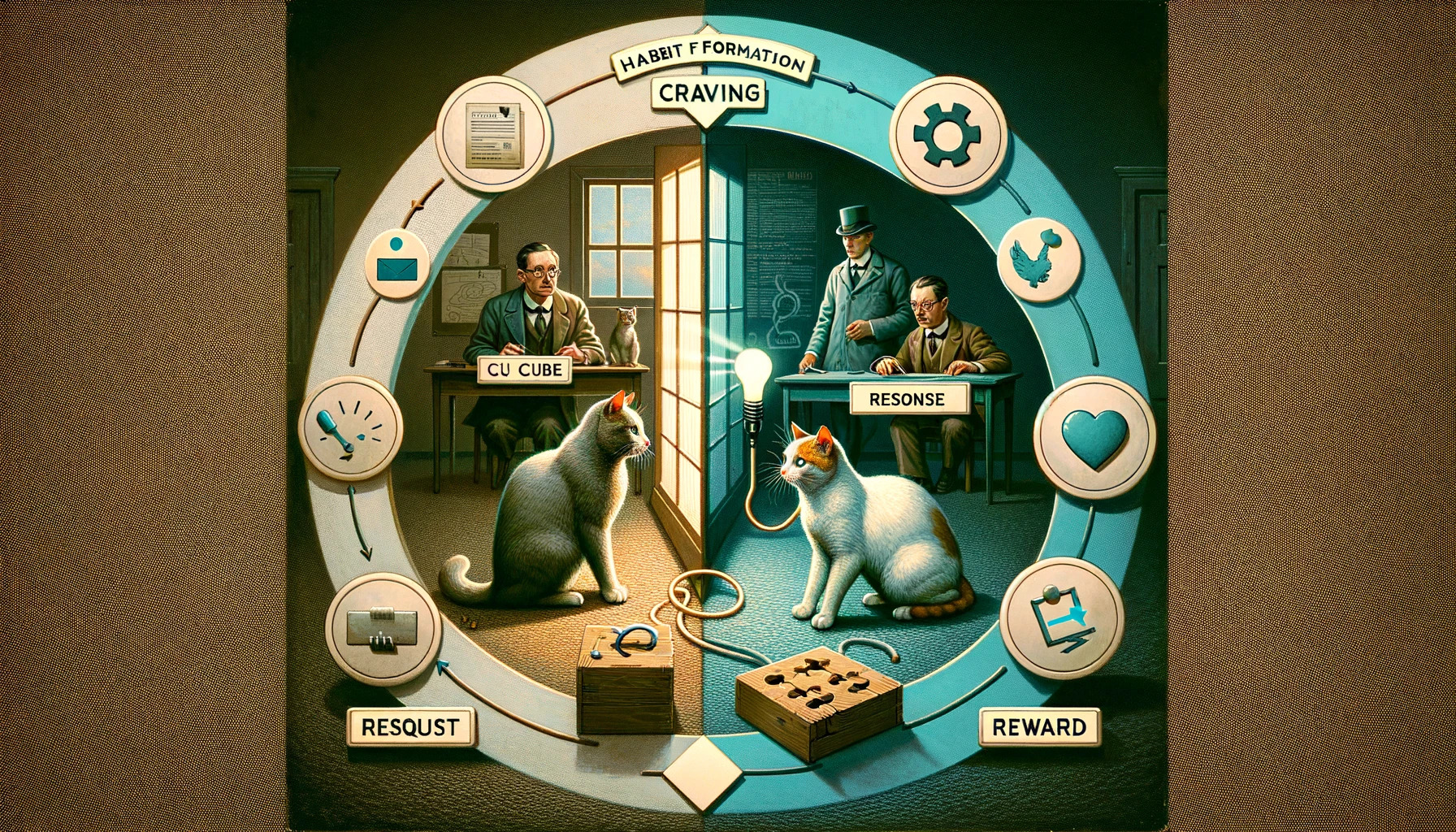How to Build Better Habits in 4 Simple Steps
Understanding Habit Formation
Edward Thorndike's experiments with cats in puzzle boxes revealed early insights into habit formation, emphasizing behaviors followed by satisfying consequences tend to be repeated. This foundational study underscores the essence of habits as automatic behaviors shaped by repeated practice and reinforced by rewards.

A habit is a behavior repeated enough to become automatic.
Why Habit Formation is Crucial
Habits serve to solve life's recurring problems with minimal effort, highlighting the brain's tendency to optimize processes. This efficiency not only conserves mental energy but also underscores the role of habits in navigating daily life effectively.
The Process of Habit Formation
- Trial and Error: Initially, the brain explores various responses to new situations.
- Reward-based Learning: Upon finding a rewarding action, the brain quickly associates this action with the reward.
- Automation: Repeated practice solidifies this association, turning the action into an automatic response.
The Role of Rewards
Rewards play a dual role in habit formation: they provide immediate satisfaction and serve as learning signals for the brain, reinforcing the habit loop.
Why Your Brain Builds Habits
Habits streamline cognitive processes, allowing the conscious mind to focus on novel or complex tasks. This efficiency not only simplifies decision-making but also fosters creativity and problem-solving by freeing up mental resources.
Habits do not restrict freedom; they create it.
Enhancing Life Through Habits
Good habits in health, finances, and learning establish a foundation for freedom and opportunity. By automating routine decisions, habits enable a focus on higher-order thinking and creative endeavors.
The Misconception of Routine
Contrary to the belief that habits might dull life, they actually enable a richer, more spontaneous experience by eliminating the need for constant decision-making about basics, thereby liberating mental space for creativity and new challenges.
The Science of How Habits Work
Habits operate through a four-step process: cue, craving, response, and reward. Understanding these components can illuminate how habits form and guide strategies for modifying them.
Habits follow a four-step pattern: cue, craving, response, reward.
Breaking Down the Habit Loop
- Cue: A trigger that initiates the behavior.
- Craving: The motivational force behind the habit.
- Response: The actual habit behavior.
- Reward: The goal of the habit, providing satisfaction.
Application to Daily Life
This loop underlies all habits, dictating our behaviors in response to our environment and internal states. By manipulating these stages, we can create new habits or alter existing ones.
The Four Laws of Behavior Change
To effectively build new habits or change existing ones, aligning with the Four Laws of Behavior Change—make it obvious, attractive, easy, and satisfying—is essential. These laws offer a practical framework for habit modification.
To change a habit, make it obvious, attractive, easy, and satisfying.
Creating Good Habits
- Make it obvious: Design environments that trigger desired behaviors.
- Make it attractive: Increase the appeal of positive behaviors.
- Make it easy: Reduce friction and simplify actions.
- Make it satisfying: Ensure actions yield rewarding outcomes.
Breaking Bad Habits
Inverting these laws can help eliminate undesired habits by making them invisible, unattractive, difficult, and unsatisfying.
Practical Applications
These principles apply across various aspects of life, offering a universal strategy for habit formation. By adjusting our environment, motivations, actions, and rewards, we can steer our habits in desirable directions.
Chapter Summary
- Habits automate solutions to life's recurring problems, optimizing brain efficiency.
- The four-step habit loop (cue, craving, response, reward) provides a framework for understanding and modifying behavior.
- The Four Laws of Behavior Change offer actionable strategies for developing beneficial habits and eliminating harmful ones, enhancing personal freedom and capacity for growth.
Backlinks